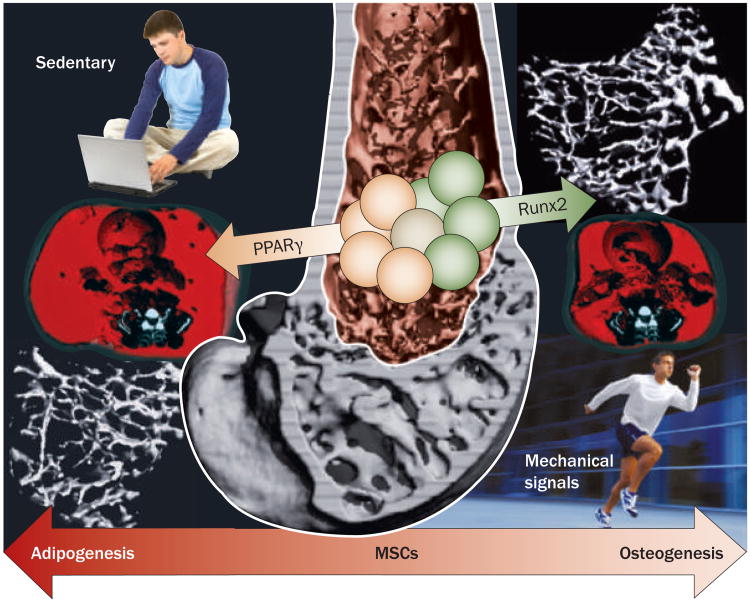Figure 4.
Mechanical loading influences MSC differentiation. The ability of mechanical signals to increase bone formation while inhibiting fat formation centers on the mechanical sensitivity of the common progenitor stem cell from which osteoblasts and adipocytes differentiate. Shown in reconstructed microcomputed images, low-magnitude mechanical signals bias the bone marrow stem-cell population towards osteoblastogenesis, resulting in greater bone density in the proximal tibia (upper right) and reduced visceral adiposity across the abdomen (red in the lower right image). These images are compared with those from placebo control animals who ate the same amount of food, yet over the same time period had significantly less trabecular bone (lower left) and more fat (upper left; reproduced at same scale). The phenotypic outcomes are mirrored by transcriptional changes, as reflected by increased Runx2 expression and reduced PPARγ expression in the marrow of the LMMS animals. Abbreviations: LMMS, low- magnitude mechanical signal; MSC, mesenchymal stem cell; PPARγ, peroxisome proliferator-activated receptor. Permission obtained from J. Bone Miner. Res.24, 50–61 © (2009) American Society for Bone and Mineral Research.52

